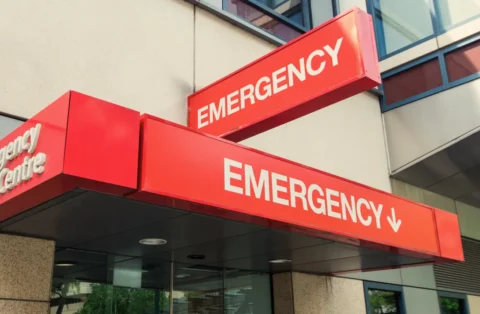Opioid overdoses aren’t always as obvious as we might think. While Hollywood often portrays overdoses with dramatic symptoms, in real life, the signs can sometimes be subtle—and easy to overlook. Recognizing the more understated opioid overdose symptoms can be life-saving, especially since some overdoses develop gradually and might not look like the “classic” version we expect.
In this guide, we’ll walk through the lesser-known signs of an opioid overdose. From subtle changes in breathing to unusual sleepiness, we’ll cover what to watch for and why even the quietest symptoms shouldn’t be ignored.
With a little knowledge, you’ll be better prepared to recognize and respond if someone around you might be in danger.
Why Are Opioid Overdoses Sometimes Hard to Spot?
Opioids, whether prescription painkillers or illicit drugs like heroin, work by binding to receptors in the brain that regulate pain and mood. They can also slow down breathing and heart rate, and in high doses, this can lead to life-threatening symptoms.
However, not every overdose is sudden or obvious—some start off subtly, especially if the person has built up a tolerance or if they’re mixing opioids with other depressants, like alcohol.
That’s why it’s essential to know the quieter signs of an overdose. These symptoms may appear mild or “normal” at first, but they can quickly progress to a dangerous level.
Subtle Physical Symptoms of an Opioid Overdose
1. Pinpoint Pupils
What to Look For: When a person’s pupils become very small—even in low light—this is a strong indicator that they’ve taken opioids. Pinpoint pupils, also called “miosis,” can be a subtle but telltale sign.
Why It Happens: Opioids like heroin, oxycodone, and fentanyl cause the muscles in the eye to constrict, leading to unusually small pupils. This symptom is one of the earliest signs of opioid toxicity and often doesn’t occur with other types of substances.
2. Shallow or Slow Breathing
What to Look For: Listen for slow or shallow breaths. The person may appear to “forget” to breathe momentarily or take only small breaths, making their breathing barely noticeable.
Why It Happens: Opioids slow down brain signals telling the body to breathe regularly. Shallow or slow breathing is one of the most serious signs, as it means the body may not be getting enough oxygen.
3. Unusual Sleepiness or “Nodding Off”
What to Look For: They might struggle to keep their eyes open, seem to fall asleep mid-sentence, or keep “nodding off” even in situations where they’d usually be wide awake.
Why It Happens: Opioids can induce extreme drowsiness as they affect the brain’s natural activity levels. If someone is repeatedly “nodding off” and is hard to wake, their central nervous system may be increasingly suppressed, a red flag for opioid overdose.
Behavioral and Mental Signs of an Opioid Overdose
Along with physical symptoms, there are mental and behavioral changes that may point to an overdose. These can look like mild “spaciness” or tiredness but shouldn’t be ignored, especially if the person’s behavior is out of character.
1. Confusion or Disorientation
What to Look For: Confusion, a “spaced-out” expression, or difficulty answering simple questions are signs of potential trouble. They might seem detached from reality, struggle to keep up with conversations or exhibit delayed responses.
Why It Happens: Opioids slow down cognitive processes, which makes it harder for the brain to keep up. This kind of mental “fog” often appears before more severe symptoms, so don’t dismiss it.
2. Falling Asleep in Unusual Situations
What to Look For: Nodding off in settings where they’d usually stay awake, like during a conversation, at a meal, or while watching a show.
Why It Happens: Opioids depress the central nervous system, making it difficult for people to stay fully alert, even in stimulating environments. This can be especially concerning if paired with other signs like shallow breathing.
3. Sudden Emotional Flatness or Calmness
What to Look For: A sudden shift to a very calm, flat, or emotionless state—especially if they were just lively or animated. This can seem subtle, but if their personality changes abruptly, it could be a red flag.
Why It Happens: Opioids dull natural emotional responses, causing some people to appear unusually detached or uninterested. This isn’t just a mood change; it’s a sign that the drug is affecting their brain’s ability to respond normally.
Signs That Require Immediate Action
While these early signs may seem mild, it’s crucial to understand that they can escalate to life-threatening levels if not addressed immediately.
Here are signs that should prompt immediate intervention:
1. Unresponsiveness or Difficulty Waking
If someone becomes unresponsive to verbal cues, loud noises, or even gentle shaking, they may be slipping into a deeper level of overdose.
Action: Try gently shaking them or calling their name loudly. If they don’t respond, don’t wait—this is a serious sign that requires emergency attention.
2. Breathing Becomes Irregular or Pauses Altogether
If you notice breathing that’s extremely shallow, sporadic, or has stopped, this is a medical emergency. Reduced oxygen can lead to brain injury or death within minutes. Administer naloxone (Narcan) if you have it and call 911 right away.
Action: Look at their chest to check for a steady rise and fall. If their breathing is shallow, irregular, or you can’t see any movement, call emergency services immediately. If available, administer Narcan (naloxone) to temporarily reverse the overdose.
3. Lips or Fingertips Turning Blue or Gray
As breathing slows, the blood may not carry enough oxygen, causing a bluish or grayish tint around the lips, fingertips, or skin. This condition, called cyanosis, is a late-stage symptom that requires urgent intervention.
Action: Blue or gray skin is a sign of low oxygen levels in the blood and should be treated as a medical emergency. Call 911, administer Narcan if possible, and stay with the person until help arrives.
What to Do If You Notice These Symptoms
When it comes to an overdose, every second counts. Here’s a quick guide on what to do if you observe subtle overdose symptoms:
- Stay Calm and Assess: Take note of their breathing, responsiveness, and overall behavior.
- Attempt to Rouse Them: Gently shake or call out their name. If they don’t respond, escalate your response.
- Administer Naloxone (Narcan): If you have Narcan, administer it according to the instructions. Naloxone can temporarily block opioids and reverse an overdose, buying time until help arrives.
- Call 911: Even if symptoms seem mild, an opioid overdose can escalate rapidly. Inform emergency responders about the symptoms and any drugs taken, if known.
Naloxone is available in many pharmacies without a prescription in the U.S., and having it on hand can be a life-saving resource for anyone at risk of opioid overdose.
How QuickMD Supports Opioid Addiction Recovery with Telehealth Suboxone Treatment
Spotting overdose symptoms is crucial, but having reliable, ongoing support is equally essential for anyone facing opioid addiction. QuickMD offers a confidential, accessible way for individuals to receive Suboxone treatment via telemedicine, helping them stay on the path to recovery with professional guidance and support.
Suboxone, a combination of buprenorphine and naloxone, is frequently used in Medication-Assisted Treatment (MAT) to reduce cravings and ease withdrawal symptoms.
Through QuickMD’s telemedicine services, licensed providers can prescribe Suboxone remotely, allowing patients to begin treatment in the comfort of their own homes—without the need for in-person visits.
Why QuickMD’s Telehealth Option Makes a Difference
- Immediate Access: QuickMD’s telemedicine service allows for quick access to addiction treatment, often with same-day or next-day appointments.
- Customized Treatment Plans: QuickMD providers assess each patient’s unique situation to create a personalized treatment plan tailored to their needs.
- Continuous Support: Telemedicine enables consistent check-ins, dosage adjustments, and progress monitoring to help individuals stay on track in their recovery journey.
With QuickMD’s telehealth Suboxone treatment, individuals struggling with opioid dependence have access to the tools they need to regain control of their health.
If you or someone you know is ready to start a confidential treatment plan, visit QuickMD’s online addiction services to take the first step toward recovery.
Final Thoughts: Recognizing Subtle Overdose Symptoms Can Save Lives
Knowing how to spot the quieter signs of an opioid overdose can help prevent tragedy. Symptoms like pinpoint pupils, shallow breathing, and unusual drowsiness may seem small at first but can quickly lead to severe consequences if left untreated.
And remember, if you or a loved one needs support for opioid addiction, QuickMD’s telehealth services offer reliable, accessible help through Suboxone treatment and professional guidance. Recovery is possible, and with the right tools and awareness, you can play a part in ensuring safety and support every step of the way.




